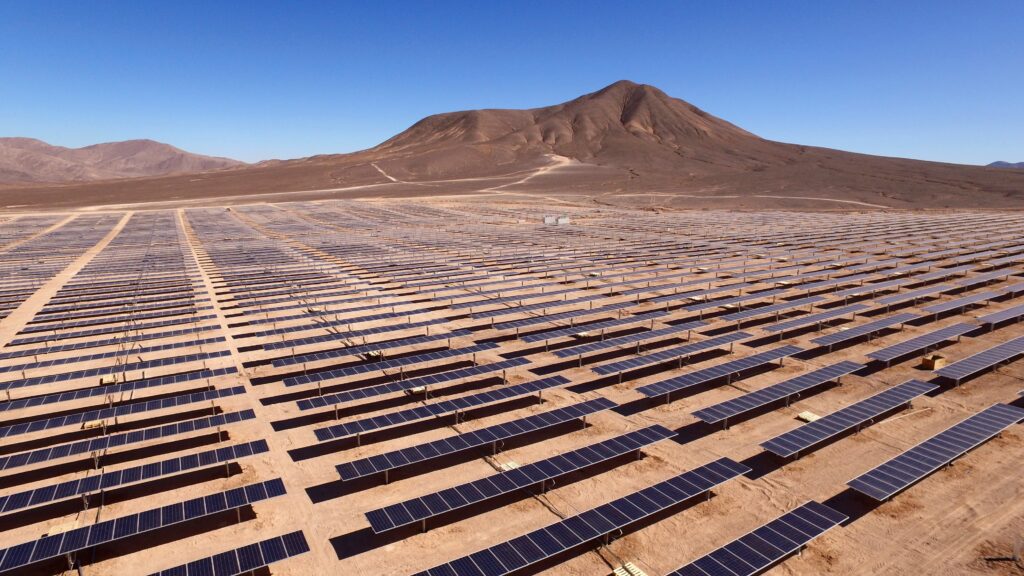In this article, you will discover the truth about solar generators and whether or not they emit carbon monoxide. Curious to know if this clean and renewable energy source comes with any potential risks? Rest assured, we will delve into the topic and provide you with all the necessary information so that you can make an informed decision about harnessing the power of the sun. Stay tuned to find out the facts behind solar generators and carbon monoxide emissions.
Understanding Solar Energy
Definition of Solar Energy
Solar energy is a form of renewable energy that is derived from the sun’s light and heat. It is a clean source of energy that does not produce any harmful emissions or pollutants. Solar energy is harnessed through the use of solar panels, which capture sunlight and convert it into electricity that can be used to power various devices and appliances.
How Solar Energy Works
Solar energy works by harnessing the power of the sun through the use of solar panels. These panels are made up of photovoltaic cells, which convert sunlight into electricity. When sunlight hits the solar panels, the photons in the light knock electrons loose from their atoms, generating an electric current. This electric current can then be used to power homes, businesses, and even entire cities.
Solar Energy versus Traditional Energy Sources
One of the key differences between solar energy and traditional energy sources, such as fossil fuels, is the eco-friendliness of solar power. Unlike traditional energy sources, solar energy does not release harmful emissions or pollutants into the air when it is generated. This makes solar energy a much cleaner and sustainable option for meeting our energy needs. Additionally, solar energy is renewable and abundant, as long as the sun continues to shine.
Defining Solar Generators
What Does A Solar Generator Do
A solar generator is a device that converts solar energy into electricity and stores it for later use. It consists of several components, including solar panels, a charge controller, a battery, and an inverter. The solar panels absorb sunlight and convert it into DC (direct current) electricity, which is then fed into the charge controller. The charge controller regulates the flow of electricity and ensures that the battery is charged properly. The battery stores the electricity generated by the solar panels, allowing it to be used later when needed. The inverter converts the DC electricity stored in the battery into AC (alternating current) electricity, which can be used to power various devices and appliances.
How Does a Solar Generator Work
Solar generators work by harnessing the power of the sun’s rays through the use of solar panels. These panels are made up of photovoltaic cells, which are made of semiconductors such as silicon. When sunlight hits the solar panels, it excites the electrons in the semiconductors, causing them to move and create an electric current. This electric current is then converted into usable energy through the various components of the solar generator.
Components of a Solar Generator
A solar generator consists of several key components that work together to harness and store solar energy. These components include:
- Solar Panels: These panels are made up of photovoltaic cells that convert sunlight into electricity.
- Charge Controller: This device regulates the flow of electricity from the solar panels to the battery, ensuring that it is charged properly and preventing overcharging.
- Battery: The battery stores the electricity generated by the solar panels for later use. It allows the solar generator to provide power even when the sun is not shining.
- Inverter: The inverter converts the DC electricity stored in the battery into AC electricity, which can be used to power devices and appliances.

Basic Principles of Carbon Monoxide Generation
What is Carbon Monoxide
Carbon monoxide (CO) is a colorless, odorless, and tasteless gas that is produced by the incomplete combustion of fossil fuels, such as gasoline, natural gas, and coal. It is a highly toxic gas that can be harmful or even fatal when inhaled in high concentrations. Carbon monoxide is often referred to as the “silent killer” because it is impossible to detect without the use of specialized equipment.
Sources of Carbon Monoxide
Carbon monoxide can be released into the environment through various sources. Some of the main sources of carbon monoxide include:
- Vehicle Emissions: Cars, trucks, and other motor vehicles produce carbon monoxide as a byproduct of the combustion process.
- Residential Combustion: Carbon monoxide can be produced by the burning of fuels in residential settings, such as gas stoves, fireplaces, and furnaces.
- Industrial Processes: Certain industrial processes, such as the burning of fossil fuels for energy production, can release carbon monoxide into the atmosphere.
- Tobacco Smoke: Tobacco smoke contains carbon monoxide, which can be inhaled by both smokers and those exposed to secondhand smoke.
How Carbon Monoxide is Produced
Carbon monoxide is produced when there is not enough oxygen available during the combustion process. When fuels are burned in an environment with insufficient oxygen, such as in a closed space or a poorly ventilated area, carbon monoxide is produced instead of carbon dioxide (CO2). This is why carbon monoxide is often associated with incomplete combustion and is considered a potential danger in indoor environments.
Emissions from Energy Sources
Emissions from Traditional Energy Sources
Traditional energy sources, such as fossil fuels, are known to produce significant emissions that contribute to air pollution and climate change. When fossil fuels are burned for energy production, they release carbon dioxide (CO2), methane (CH4), and other greenhouse gases into the atmosphere. These greenhouse gases trap heat from the sun, leading to global warming and climate change. In addition to greenhouse gas emissions, traditional energy sources also release pollutants such as sulfur dioxide (SO2), nitrogen oxides (NOx), and particulate matter (PM), which can have detrimental effects on human health and the environment.
Emissions from Renewable Sources
Renewable energy sources, including solar energy, produce minimal emissions compared to traditional energy sources. Solar energy does not release any greenhouse gases, as the process of converting sunlight into electricity does not involve the combustion of fossil fuels. However, it is worth noting that emissions may still occur during the manufacturing and disposal of solar panels and other components of solar energy systems. These emissions are generally considered to be much lower compared to the emissions associated with traditional energy sources.
Comparative Analysis of Emissions from Different Energy Sources
When comparing the emissions from different energy sources, solar energy stands out as one of the cleanest options available. Traditional energy sources, such as coal and oil, release significant amounts of greenhouse gases and other pollutants when burned. On the other hand, solar energy produces virtually no emissions during its operation. While there may be some emissions associated with the production and disposal of solar panels, these emissions are considered to be minimal compared to the ongoing emissions from traditional energy sources.

Carbon Monoxide Emissions from Solar Generators
Do Solar Generators Emit Carbon Monoxide?
No, solar generators do not emit carbon monoxide. Since solar generators harness the power of the sun to generate electricity, there is no combustion process involved. As a result, there is no production of carbon monoxide or any other harmful emissions. This makes solar generators a safe and eco-friendly alternative to traditional generators that rely on fossil fuels.
Factors Affecting Emissions from Solar Generators
As mentioned earlier, solar generators do not produce carbon monoxide or emissions during their operation. However, it is important to consider other factors that may indirectly contribute to emissions. For example, the manufacturing process of solar panels and other components of solar energy systems may produce some emissions. Additionally, the disposal of solar panels at the end of their lifespan should be done responsibly to minimize any potential environmental impacts. Overall, the emissions associated with solar generators are considered to be minimal compared to other energy sources.
Study Reports on Emissions from Solar Generators
Various studies have been conducted to assess the environmental impacts of solar energy systems, including solar generators. These studies have consistently found that solar energy produces minimal emissions and has a much lower impact on air quality compared to traditional energy sources. A study published in the Journal of Renewable and Sustainable Energy concluded that solar photovoltaic systems have a smaller carbon footprint compared to conventional grid electricity systems.
Impact of Solar Energy on Environment
Environmental Benefits of Solar Power
Solar power offers numerous environmental benefits that make it a sustainable and eco-friendly energy source. Some of the key environmental benefits of solar power include:
- Reduction in Greenhouse Gas Emissions: Solar power does not produce any greenhouse gas emissions, such as carbon dioxide or methane, during its operation. This helps to mitigate climate change and reduce air pollution.
- Conservation of Natural Resources: Solar power relies on the abundant energy from the sun, which is a renewable and inexhaustible resource. By harnessing solar energy, we can reduce our dependence on finite fossil fuel resources.
- Protection of Biodiversity: Solar power does not contribute to habitat destruction or biodiversity loss, unlike some traditional energy sources that require land clearing or drilling activities.
- Water Conservation: Unlike traditional power plants that require large amounts of water for cooling and steam generation, solar power does not necessitate significant water usage. This helps to conserve water resources in regions with water scarcity.
Environmental Impact of Solar Power Production
While solar power has numerous environmental benefits, it is not without its own environmental impacts. The production of solar panels and other components of solar energy systems requires the use of raw materials, energy, and water. The extraction and processing of these raw materials can contribute to land degradation, water pollution, and habitat destruction. The manufacturing process itself consumes energy and may release some emissions. However, it is worth noting that these impacts are significantly lower compared to the ongoing emissions from traditional energy sources.
Waste Management in Solar Energy Systems
Proper waste management is crucial for minimizing the environmental impact of solar energy systems. At the end of their lifespan, solar panels can be recycled to recover valuable materials and reduce the need for raw material extraction. Recycling programs and initiatives are being implemented to ensure that solar panels are disposed of responsibly. Additionally, advancements in solar panel technology are focused on developing more sustainable and recyclable materials, further reducing the environmental impact of solar energy systems.

Solar Generators and Indoor Air Quality
Risk of Carbon Monoxide in Conventional Generators
Conventional generators that rely on fossil fuels, such as gasoline or diesel, pose a significant risk to indoor air quality. When these generators are operated in enclosed or poorly ventilated spaces, they can produce carbon monoxide gas, which is highly toxic when inhaled. Carbon monoxide poisoning can lead to headaches, dizziness, nausea, and even death if levels are high enough. It is important to use conventional generators in well-ventilated areas or outside to minimize the risk of carbon monoxide exposure.
Impact of Solar Generators on Indoor Air Quality
Solar generators offer a safe and clean alternative to conventional generators when it comes to indoor air quality. Since solar generators do not rely on fossil fuels or involve any combustion process, they do not produce carbon monoxide or any other harmful emissions. This means that solar generators can be safely used indoors without posing a risk to indoor air quality. They are an ideal choice for powering essential appliances during power outages or for off-grid living scenarios.
Potential Health Risks
The use of conventional generators in indoor environments can have severe health consequences due to the risk of carbon monoxide poisoning. Carbon monoxide is a silent, odorless killer that can quickly build up to dangerous levels, leading to acute or chronic health effects. Exposure to high levels of carbon monoxide can cause headaches, dizziness, confusion, nausea, and even death. Solar generators eliminate this risk, providing a safe and healthy alternative for indoor power generation.
Addressing Common Misconceptions
Misconception About Solar Power Emissions
One common misconception about solar power is that it emits carbon monoxide or other harmful emissions. As we have discussed earlier, solar power does not involve any combustion process, and therefore, does not produce carbon monoxide or emissions during its operation. Solar energy is a clean and sustainable source of power that helps to reduce greenhouse gas emissions and air pollution.
Solar Power and Carbon Footprint
Another misconception is that solar power has a high carbon footprint due to the production and disposal of solar panels. While it is true that the production of solar panels requires energy and resources, the carbon footprint of solar power is significantly lower compared to traditional energy sources. Once installed, solar panels generate electricity with minimal to no emissions, offsetting the emissions associated with their production. The carbon footprint of solar power is further reduced when considering the lifespan of solar panels, which can range from 25 to 30 years or more.
Addressing Misinformation
In order to address and combat misinformation, it is important to rely on reputable sources of information and scientific studies. Peer-reviewed research and reports from reputable organizations can provide accurate and reliable information about the benefits and impacts of solar power. Educating oneself and others about the facts of solar energy can help dispel common misconceptions and highlight the importance of transitioning to cleaner and more sustainable energy sources.
Safety Measures in Using Solar Generators
Choosing the Right Solar Generator
When selecting a solar generator, it is important to consider your power needs and the specific features of the generator. Factors such as power output, battery capacity, and portability should be taken into account. It is also recommended to choose solar generators from reputable manufacturers that meet safety standards and have positive customer reviews. Reading product specifications and consulting with professionals can help you make an informed decision and choose the right solar generator for your needs.
Proper Use and Maintenance of Solar Generator
To ensure the safe and efficient operation of a solar generator, it is important to follow the manufacturer’s instructions for use and maintenance. This includes properly connecting and disconnecting devices, avoiding overloading the generator, and keeping it clean and free of debris. Regular maintenance, such as cleaning the solar panels and checking the battery’s charge level, can also help optimize the performance of the solar generator.
Installation Guidelines and Measures
If you are considering installing a solar energy system, it is recommended to consult with professionals or certified installers. They can provide guidance on the best system design, installation practices, and safety measures. Proper installation is crucial for ensuring the safe and reliable operation of the solar energy system, as well as maximizing its performance and lifespan.
Conclusion: Carbon Monoxide and Solar Generators
Summarizing the Effects of Solar Generators on Carbon Monoxide Emission
Solar generators do not emit carbon monoxide or any other harmful emissions during their operation. They harness the power of the sun to generate clean and sustainable electricity, making them a safe and eco-friendly alternative to conventional generators. The use of solar generators can significantly reduce the risk of carbon monoxide poisoning in indoor environments, ensuring a healthier and safer living or working environment.
The Future of Solar Power and Emissions
As the world continues to shift towards cleaner and more sustainable energy sources, the future of solar power looks bright. Solar energy has significant potential for further development and expansion, with advancements in technology and increased affordability driving its adoption. As we continue to reduce our dependence on fossil fuels and increase the use of solar energy, we can expect further reductions in carbon monoxide emissions and other harmful pollutants.
Closing Thoughts on Carbon Monoxide and Solar Generators
Solar generators offer a reliable and sustainable solution for generating electricity without the risk of carbon monoxide emissions. They provide clean and renewable energy that can power our homes, businesses, and communities while protecting the environment and improving air quality. By embracing solar power and incorporating solar generators into our energy systems, we can contribute to a greener and healthier future for generations to come.




